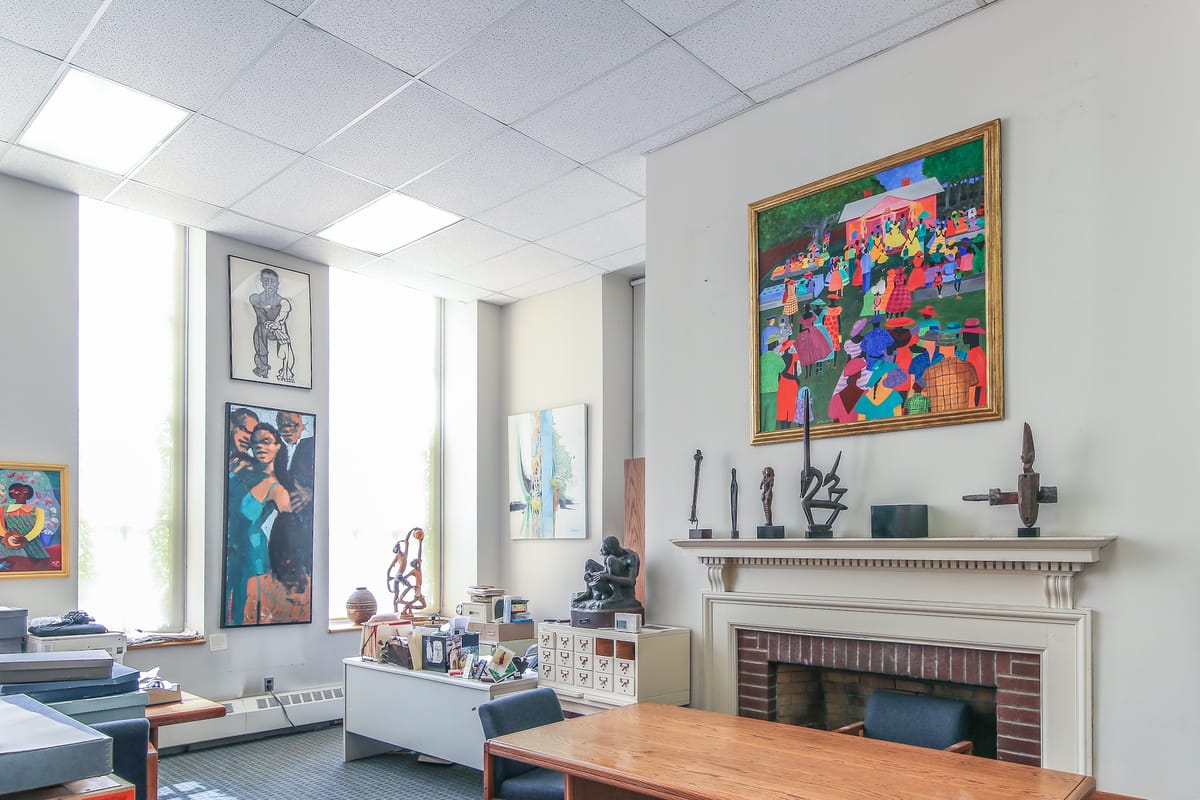The Schomburg Center for Research in Black Culture Is Turning 100
The Harlem institution is marking the occasion with a yearlong series of events including a special exhibition and a block party.

The New York Public Library’s (NYPL) Schomburg Center for Research in Black Culture in Harlem is turning 100, and marking the occasion with a yearlong series of centennial programs exploring its history, including an exhibition of collection objects and a centennial festival and block party.
“This institution has been around during segregation, multiple movements, civil rights movements, labor movements, and terrible economies,” Joy Bivins, director of the center, told Hyperallergic at a press conference today, Tuesday, February 4. “Black History is our lifeblood. We don't wait to celebrate it, and we don't ask for people’s permission to celebrate it.”

Named in 1940 after Arturo Schomburg, a Puerto Rican-born scholar and collector of Black literature and diasporic materials, the institution was established in May 1925 as NYPL’s division of Black history and literature. The following year, the branch acquired Schomburg’s collection of about 3,000 volumes, 1,100 pamphlets, and numerous prints and manuscripts related to Black literature, art, and narratives of enslaved people.
One hundred years later, the Schomburg Center will display a selection of rare and notable items from its now 11 million-item collection in an exhibition as part of 100: A Century of Collections, Community, and Creativity, opening May 8.

A centennial festival will also take place on June 14, during which the institution will combine its annual Black Comic Book Festival, Schomburg Center Literary Festival, block party, and music performance.
The center will also announce a series of additional interactive programming, including talks, performances, and screenings at a later date.
At Tuesday’s press conference, NYPL President and Chief Executive Officer Anthony Marx made reference to the impacts of the sweeping attacks on diversity initiatives in recent weeks.
“We live in a moment when that history, when the history of the essential peoples of America, including so essentially the African American people … are being pushed aside, when our commitments diversity, equity and inclusion, inclusion are being threatened,” Marx said.

United States Representative Adriano Espaillat, who was also in attendance, described the Schomburg as “a center of Black culture that should be emulated by the rest of the country, if not the world.”
District 9 City Council member Yusef Salaam, who was once convicted and exonerated as part of the “Central Park jogger” case and now represents Harlem, Morningside Heights, and Manhattan Valley, noted to a full audience that the Schomburg has always been a “part of black intellectual and artistic excellence.”
“It has preserved the voices of James Baldwin, Zora Neale Hurston, Malcolm X, and Toni Morrison,” Salaam said, “and it will continue to amplify the voices of those who shape our future.”







